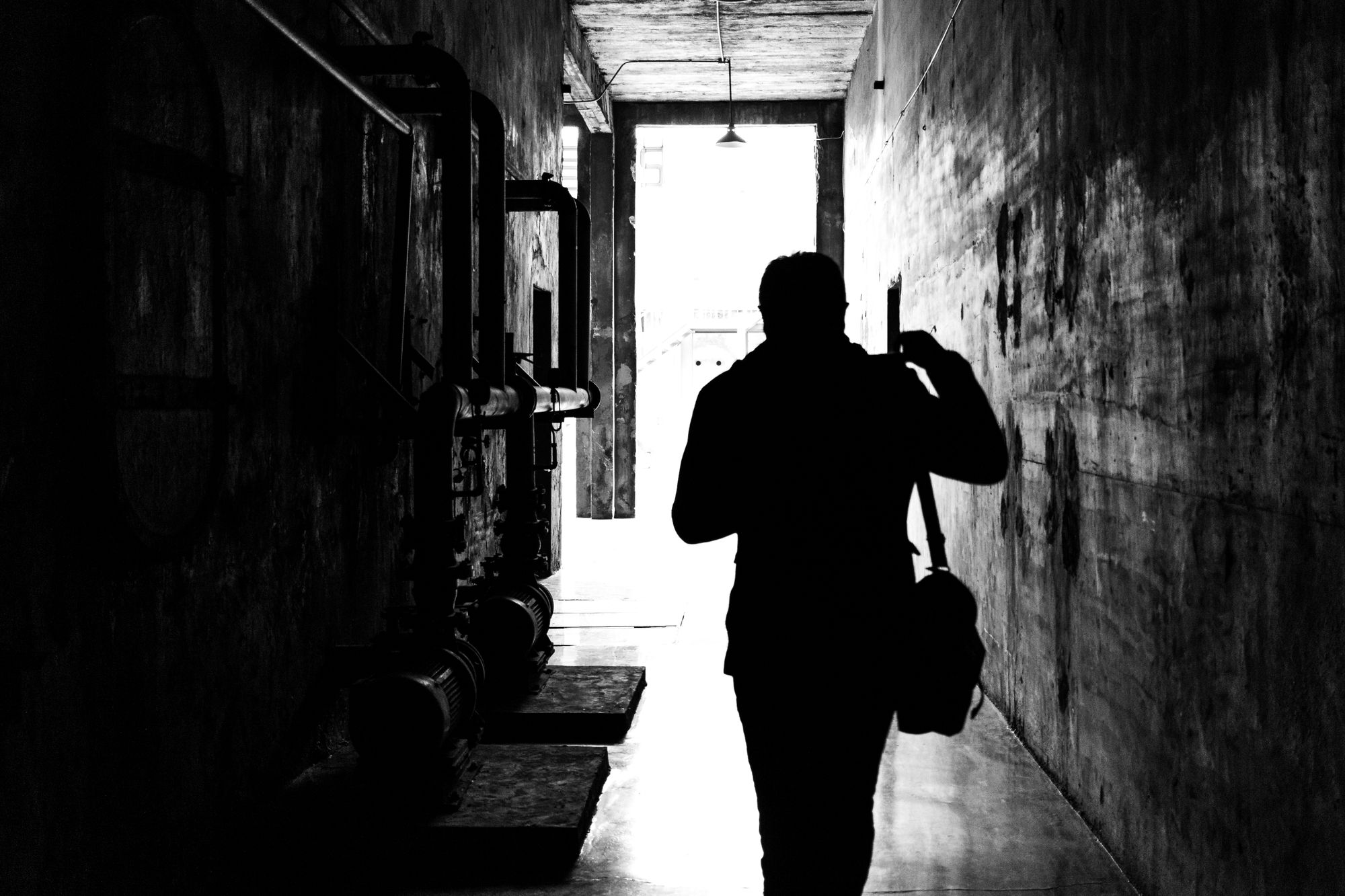Lone researchers - balancing safety against the reproduction of vulnerability
As a researcher and someone who advises researchers I have an ethical responsibility to warn you about the threats to your safety. But I also have a responsibility not to make my perceptions about my vulnerability into perception of your vulnerability.

Image attribution Giuseppe Milo Scott street - Glasgow, Scotland - Black and white street photography 2.0 Generic (CC BY 2.0)
What is the situation?
I’ve wandered the tubes of London late at night with bulky and expensive recording equipment, I’ve interviewed people in dark corners of nightclubs, I’ve been in people’s homes and cars, in groups with youths who carry knives, and behind closed doors with emotionally volatile people. Looking at my experiences it’s easy to see the threats to my safety:
- Mugging/robbery/damage to property
- Sexual assault
- Harassment
- Physical assault
- Verbal abuse
- Threats of violence
You don’t have to be researching violence or criminality to be at risk in the field. Qualitative Research frequently involves researchers talking to people, often in places where the researcher is the outsider, in an unfamiliar location, an unfamiliar setting and frequently alone. You may be in someone else’s home – to all intents and purposes, a stranger’s home. Alternatively, you may be in a public space surrounded by people, but in an unfamiliar place, with unfamiliar people, perhaps doing things that draw attention to you, (like looking closely at things or people, making notes, taking photos), or wearing clothing that marks you out. Perhaps your gender, age or ethnicity marks you as an outsider.
What is the problem with co-production of vulnerability?
Before your mind starts running away with all the possible threats to your safety, I want to raise the issue of co-produced vulnerability. Women especially spend their lives being told ‘be careful’. Women are frequently told what, where and when they should not do or go for fear of something bad happening. Women themselves tell each other about the limits they place upon themselves to keep themselves safe. It’s not surprising really when every woman I know can tell of unwanted sexual contact and of threats and verbal-abuse when demands to engage with others (usually men) are rejected.
As a researcher and someone who advises researchers I have an ethical responsibility to warn you about the threats to your safety. But I also have a responsibility not to make my perceptions about my vulnerability into perception of your vulnerability. For example, you usually walk home from the bus-stop in the dark every evening in your neighbourhood; you don’t feel vulnerable. During a conversation at work, others express shock and surprise that you do this: ‘Aren’t you afraid?’ ‘I would never do that! ‘You might get attacked!’ So what’s the problem? They’ve projected their fears onto you (maybe an unwelcome burden); alerted you to a potential threat without any way of managing it, increasing your sense of vulnerability, and outlined what they think is acceptable behaviour. The message from them is: ‘I’m afraid, you should be too. I don’t do that, neither should you!’ Not only do you now have a fear, you also have a sense that if you carry on as before, then it is your fault if someone does you harm.
This is how vulnerability is co-produced in society. I confess that it makes me angry; it shifts the responsibility of crime away from perpetrators and on to victims of crime, and it is disempowering. This is a tension for me. I have a responsibility to point out threats that you may be unaware of and help you in your safety, but I don’t want to tell you what I would or wouldn’t do because of my particular perceptions of threat. I need to remain objective in balancing general considerations of safety against the dangers of reproducing your vulnerability.
So what is the risk really?
The risk of serious assault or mugging is higher for men than women, and highest for younger men. The risk of serious violence, sexual or otherwise is low. The risk of disturbing and distressing incidents however is harder to quantify, but it is pervasive, especially for women and researchers from marginalised groups. It’s important in Qualitative Research to be as close to context of the research as possible. A researcher alone in an unfamiliar ‘field’, potentially out of sight of witnesses experiences different and arguably greater threats than when working on campus.
How do we deal with the risk?
Remember, we do this kind of risk management every day; it just becomes more obvious and perhaps a bit scarier when the risks are laid out like they are here. You will probably have to do a Risk Assessment as part of your research proposal because Institutions have legal responsibility for your safety. Risk assessments are about being realistic about the threat, the likelihood of the threat being realised, and the steps you will take to minimise or deal with a threat should the worst happen. In short, you need a plan. The Suzy Lamplugh Trust is an organisation advising organisations (including schools and colleges),and individuals on personal safety. For individuals their basic advice is also ‘PLAN’.
- Prepare yourself. Consider some scenarios and make a plan for how you might deal with it. Talk it through with others including more experienced researchers or professionals.
- Look confident. Whether on the street or in private, act like you feel confident (even if you don’t feel it). It will help you carry out your exit plan if needed, and potentially avoid the need.
- Avoid risk. Sometime risk is difficult to avoid. I prefer mAnage risk, which might include avoiding risky situations, but also includes dynamic risk assessment in the field i.e. making decisions that keep you safe at every step of the way whilst in the field. It should also include a mechanism for reporting your safe arrival back at base, and actions to be taken to raise the alarm if you don’t. This may seem onerous, but consider, if the worst should happen, would anyone know you were missing, hurt or in need of assistance?
- Never assume. 'I’ve done it before and it was fine', is not an adequate risk assessment. Don’t assume that everything will be okay. You need a plan, just in case that highly-unlikely horrible thing does happen.
I’m going to add another piece of the Trust’s advice, to make my own acronym, PLANT.
- Trust your instincts. If it’s not feeling safe, take steps to make it safe, even if that means ending the interview, losing data, hurting someone’s feelings – and all those other things that people feel foolish about after it’s too late.
Find more information.
That last piece of advice reminds me that whilst I may not have foisted my fears on to you in this post, you may none the less have read about things that you hadn’t previously been worried about; some more practical advice might be appreciated. I’ll finish here with some objective sign-posting and you can see personal advice from Daniel and me in the next post. Practical advice for your safety.
Since I first started looking at safety in research in the noughties, there are many more policies and practices in academia, so do check your local institution for guidance. They can hard to find sometimes because they are still frequently wrapped up in general health and safety policies that focus on safety when working with chemicals or machinery, so remember to look at those. More specific policies for field work are often produced in departments. If you are located in a department where your type of field work is uncommon, try looking beyond your department, or even your institution. Why not draft a policy and take it to your institution’s Health and Safety Committee? After-all, somebody has to write it, why not you?
Resources
More tips and advice on personal safety: https://www.suzylamplugh.org/personal-safety-at-work You may need to input your email address to access this page.
If your research is in areas where violence is a large risk e.g. into an extremist group, or area of war or conflict, Gladys Ganiel’s chapter in Ethics for Graduate Researchers is a good starting point for your considerations both for Risk Assessment and Ethics Approval application.
References
https://data.gov.uk/dataset/d174ce54-1cc2-4cb2-963b-91ae703d989a/crime-statistics
https://www.suzylamplugh.org/faqs/lone-working
Ganiel, G. (2013). Research Ethics in Divided and Violent Societies: Seizing the Ethical Opportunity. In Ethics for Graduate Researchers (pp. 167-181). Elsevier.
Topics coming soon.
Practical advice for your safety:

Emotional and psychological vulnerability in research
Handling interviews in other people’s homes:


